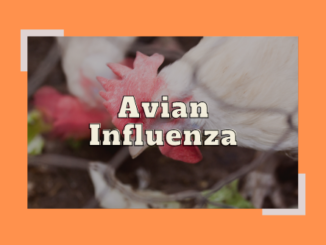Introduction
The recent death of a 47-year-old man due to the West Nile fever in Kerala’s Thrissur district has left the people in an alarming situation. Though West Nile Fever is an emerging and re-emerging zoonotic disease, people are less aware of this fatal disease. The health authorities have issued directions to prevent the spread of the disease.
What is West Nile Fever?
West Nile Fever is a mosquito borne zoonotic disease caused by West Nile Virus (WNV). West Nile virus is an enveloped single stranded RNA virus belonging to the flavivirus genus of the Flaviviridae family and poses an extremely broad host range. Though WNV primarily affects birds, it can also cause infection in a range of animals such as horses, dogs, rabbits, humans, etc. The WNV was isolated for the first time from a woman from the West Nile district of Northern Uganda in 1937. The WNV was later discovered as causative of severe human meningoencephalitis during an outbreak reported in Israel in 1957. Various clinical manifestations associated with the disease were described in detail during this outbreak. West Nile fever was reported for the first time in the United States in 1999. Later similar epidemic outbreaks were reported in different countries like Russia, Spain, South Africa, and India. Epidemic outbreaks are usually seen on the migratory route of birds. Antibodies against WNV were firstly reported in humans in Bombay in 1952. Later serologically confirmed WNV cases were reported during the late 1970s and early 1980s. West Nile fever is a prevalent disease in India and cases are reported during different periods with a recent fatality case report in 2022.
How is the West Nile virus transmitted?
Birds are the reservoir of the WNV. When mosquitoes feed on the infected birds, they become infected and act as carriers thereby spreading the disease from birds to birds or humans or other animals. Human beings contract the disease by the bite of these infected mosquitoes (mainly culex species) as the virus gain entry into the host body through the salivary glands of the mosquito. As the spread of the disease is by mosquitoes, cases are more predominant during mosquito season. West Nile virus has been disseminated in a very rare number of cases by laboratory exposure, blood transfusion and organ donation, mother to baby, during pregnancy, birth, or breastfeeding. To date, no human-to-human transmission has been reported.

What are the symptoms of West Nile fever?
Around 80% of the infected people are often asymptomatic and in the rest 20%, it can cause West Nile Fever or a severe form of the disease. The most common symptoms observed are fever, body aches, headache, weariness, nausea, vomiting, skin rashes, and enlarged lymph nodes. About 1 in 5 WNV infected people show these symptoms. The severe form of West Nile fever known as neuroinvasive disease or West Nile encephalitis or meningitis or West Nile poliomyelitis may produce symptoms like high fever, headache, disorientation, neck stiffness, stupor, tremors, convulsions, muscle weakness, paralysis, and coma. About 1 in 150 people infected, may develop the serious form of this disease, i.e., West Nile meningitis. People aged greater than 60 or with some medical conditions (cancer, kidney diseases, hypertension, diabetes, organ transplant, etc) are at higher risk of being contracted with the serious form of West Nile fever. The damage caused to the central nervous system may remain permanent in some of the infected people and around 1 in 10 people affected with the severe illness may succumb to the death.
How West Nile fever can be diagnosed?
The presence of West Nile virus-specific IgM antibodies in the serum or cerebrospinal fluid can be used to diagnose infection with the virus (CSF). These antibodies are normally detected 3 to 8 days after the onset of disease and last 30 to 90 days, while prolonged persistence has been reported. Other methods such as neutralisation assays, IgM antibody capture enzyme-linked immunosorbent assay (ELISA), viral detection by reverse transcription polymerase chain reaction (RT-PCR) assay, and virus isolation by cell culture can be employed to detect the presence of WNV.
Can West Nile fever be treated?
Neither specific treatment nor vaccine is available for the WNV infection and the infected persons are often provided with supportive treatment such as pain medications, intravenous fluids, respiratory support, and nursing care.
What are the measures to prevent WNV infection?
The most effective method for preventing the WNV infection is by taking precautionary measures to prevent the bite of mosquitoes (using mosquito repellents and staying indoors during peak hours of mosquito bites) and by controlling the mosquito breeding areas. West Nile Fever is a disease listed in the WOAH Terrestrial Animal Health Code and if any case occurs, members must report it as per the WOAH Code.
References
- Centre for Disease Control and Prevention. 2021. West Nile Virus. https://www.cdc.gov/westnile/index.html
- World Health Organization. 2017. West Nile Fever [Fact sheet].https://www.who.int/news-room/fact-sheets/detail/west-nile-virus.
- Sejvar, J. J. 2003. West Nile virus: an historical overview. The Ochsner Journal. 5(3): 6–10.
| The content of the articles are accurate and true to the best of the author’s knowledge. It is not meant to substitute for diagnosis, prognosis, treatment, prescription, or formal and individualized advice from a veterinary medical professional. Animals exhibiting signs and symptoms of distress should be seen by a veterinarian immediately. |






Be the first to comment